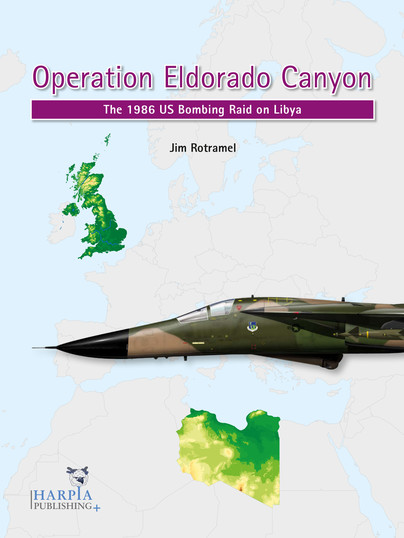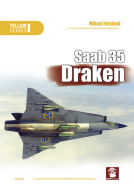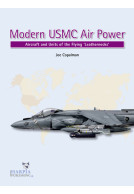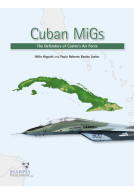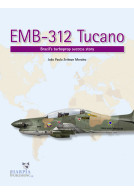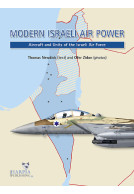Operation Eldorado Canyon (Paperback)
The 1986 US bombing raid on Libya
Pages: 256
Illustrations: colour maps, colour and black-and-white photos and tables
ISBN: 9781950394128
Published: 24th April 2024
Last Released: 31st May 2024
(click here for international delivery rates)
Need a currency converter? Check XE.com for live rates
If asked to pinpoint the beginning of the war against Islamic extremism, most would probably say September 11, 2001. However, there has been tension between Islamic autocracies and Western governments going back centuries. In the early 1980s, the boogieman du jour was Libya’s Muammar Gaddafi, who sponsored numerous acts of terrorism throughout Europe. After a series of attacks resulted in American deaths, U.S. President Ronald Reagan elected to strike back.Operation Eldorado Canyon is usually remembered as a long-range mission by British-based F-111s. However, it was an amazingly complex mission that involved two U.S. Navy aircraft carriers and a unique air refuelling plan that involved more than half of the then new KC-10 tanker inventory. For the first time, the events leading up to this operation are described, including previously unrevealed contingency operations, missions testing the ability of the F-111s to fly such an extended mission, and the mission itself from the crews that flew it.The US Air Force classified ‘forever’ the names of the F-111 crews who participated in the mission. After a 20-year reunion of the participants at RAF Lakenheath, one of the planners, Jim Rotramel, began collecting their recollections. He was later able to expand the story to include the KC-10 part of the mission. Finally, thanks to being a member of the informal Old Geezer Fighter Pilots, he contacted the Navy veterans who participated in not only Eldorado Canyon, but also Operation Prairie Fire the month before that saw the first combat employment of the Harpoon anti-ship missile.Like any post-mission fighter pilot debrief, this book lays out the conduct of the mission — the good, the bad, the ugly and even the humorous! It’s a truly unique insight into what it was like to plan and execute this daring mission and how it could have ended as a humiliating disaster at several points.
Libya’s support for terrorism and its confrontation with the United States through particularly the first half or so of the 1980s, will be well-known to members. This support prompted US planning for potential operations against Libya, as well as freedom of navigation operations challenging Tripoli’s so-called ‘Line of Death’ in the Gulf of Sidra. The Libyan-backed terrorist bombing of the La Belle Discotheque in Berlin on 5 April 1986, killing three and wounding 229, was the catalyst for Operation ELDORADO CANYON, a joint US Air Force-US Navy operation against targets in and around Tripoli, Benina and Benghazi on 15 April 1986.
The Naval Review
In Operation Eldorado Canyon, the author seeks to provide an account of the operation itself, the strategic and operational planning involved, the conduct of the strikes themselves, and the challenges surrounding the execution of a complex, joint operation. The latter is highlighted by the author, stating: “Consider that USAF and USN/USMC aircraft based 1,500nm (2,778km) apart (as the crow flies, 2,600nm/4,815km thanks to politics) had commenced successful attacks on five separate target arrays within 20 seconds of each other…” The author, Jim Rotramel, is ably qualified to provide such an account, having served in the USAF for 20 years including as an F-111 Weapon System Officer (WSO), then as a contractor at Naval Air Station Patuxent River as a weapon-loading and planning specialist. The author’s wealth of experience and depth of knowledge is visible throughout the book.
The book is divided into 10 chapters, with the author providing an overview of the evolving terrorist threat in the early 1980s, US involvement in Lebanon, and tensions with Libya. There are a couple of errors in this chapter, namely, the date of the Argentine surrender in the Falklands War being wrongly given as 29 May 1982, and Syrian President Hafez Assad referred to as a Sunni rather than Alawite. These are minor errors and do not detract from the book. The subsequent chapters focus on ELDORADO CANYON, and connected operations including the US Navy’s ATTAIN DOCUMENT and PRAIRIE FIRE, the former a series of freedom of navigation exercises challenging the ‘Line of Death’ in early 1986; the latter, strikes in March 1986 against Libyan SAM sites and patrol boats, including the combat debut of the AGM-84 Harpoon anti-ship missile. Chapters three to seven provide a day-by-day account of ELDORADO CANYON as it unfolded, with chapter eight, ‘The US Navy Attacks’, focusing on the naval contribution to ELDORADO CANYON (principally aircraft from the carriers America and Coral Sea). An appendix detailing US aircraft and units that participated is included, as is a bibliography.
The level of detail in this book is excellent, encompassing strategic and operational level decision-making down to the selection and employment of weapons, and the execution of a combat mission flying from the UK to Libya and back. It also highlights the challenges of conducting joint operations, which in the US case, as the author states “in 1986, they were just not done”, as well as the problems caused by the stove piping of intelligence and politics. In the ‘Lessons Learned and the Epilogue’, Rotramel suggests that the “most important lesson civilian and military leaders should learn from these and similar operations is that the best hope for the kind of political success they desire is to define the strategic objectives and constraints, then let the unit commanders execute the operation, making all the tactical decisions.” Whilst many of the challenges involved in the execution of ELDORADO CANYON would no longer apply (for example, relating to joint operations, technology, contemporary weapon options, etc.), the operation provides a valuable case study into the planning and execution of a complex joint operation as well as the synergistic employment of maritime and land-based airpower.
As is typical of Harpia books, Operation Eldorado Canyon features an extensive and excellent selection of photographs, diagrams, and maps, it is well-written and a highly engaging read. This book would certainly appeal to the aviation enthusiast but would also provide much value to those with a professional or academic interest in the planning and execution of joint operations. There is much to commend in this book, and it is highly recommended.







